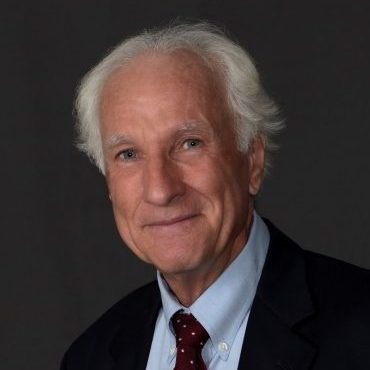“Giving one party the ability to take the other’s property if they won’t give in isn’t negotiation; that’s extortion.”
 Trying to rationally address hot button issues in an election year is always a dangerous proposition. That’s particularly true as we approach what promises to be one of the nastiest political years in history. Because so much time will be taken up campaigning, for legislation to pass it needs to get moving soon. It shouldn’t be long before we know whether anything meaningful will happen with attempts to reduce the costs of drugs, where intellectual property rights are in the crosshairs.
Trying to rationally address hot button issues in an election year is always a dangerous proposition. That’s particularly true as we approach what promises to be one of the nastiest political years in history. Because so much time will be taken up campaigning, for legislation to pass it needs to get moving soon. It shouldn’t be long before we know whether anything meaningful will happen with attempts to reduce the costs of drugs, where intellectual property rights are in the crosshairs.
Let’s keep our fingers crossed that, if action is taken, it’s based on careful consideration of all the related issues rather than raw emotion. While this may be wishful thinking, several thoughtful new articles contain important warnings against jumping down some of the beckoning gopher holes.
Critics of the Bayh-Dole Act, which provides the incentives of the patent ownership to commercialize federally funded inventions, claim that the government is developing drugs from its R&D and giving them to companies that then make “obscene profits.” Despite numerous rebuttals, this red herring is continually deployed as the justification for the government setting the price of drugs coming out of public/private sector partnerships.
A Dose of Reality
In his Boston Globe op-ed, “Biopharmaceutical companies aren’t free-riding on government research,” Dr. Michael Rosenblatt, chief medical officer of the Flagship Partnering venture firm, provides a dose of reality to the debate:
The FDA recently approved a treatment for osteoporosis, a targeted therapy for advanced bladder cancer, and a pill that can cure smallpox. For each medicine, the agency’s stamp of approval culminates years—if not decades—of expensive research.
The research that made the new osteoporosis treatment possible, for example, began in 1964 and included 19 clinical studies involving more than 14,000 patients. The medicine offers hope to the 10 million Americans living with osteoporosis by harnessing a molecular pathway that builds bone.
Such long histories are typical for drug invention. Yet some members of Congress ignore the reality of the process. These lawmakers prefer to believe that federally funded scientists develop medicines on their own — and that private-sector firms simply take advantage of this work to manufacture the medicines, earning billions as a result.
Nothing could be further from the truth. The government funds important, basic research that expands scientific knowledge and helps lay the foundation for targeted or applied research. This early work is essential, but it’s only the beginning of a long, arduous, and highly risky process that is the domain of private-sector companies…
The drug-development pipeline didn’t always work so well. Before 1980, the government retained the patent rights to publicly funded research discoveries and rarely licensed these patents to private firms. Consequently, the fruits of most federal research dollars were seldom translated into medicines that would benefit patients. Indeed, of the nearly 30,000 patents that had resulted from federal research funding up until that point, fewer than 5 percent became marketable products.
Frustrated by this, Congress passed the Bayh-Dole Act in 1980 to push discoveries that might benefit human health into the commercial sector…. The Bayh-Dole Act has worked. Public-private research collaborations with the NIH increased 500 percent after it was instituted, and potentially life-saving discoveries stopped sitting unused in university labs. In 2016 alone, private firms invested $90 billion in research and development — nearly triple the budget of the NIH.
Some lawmakers want to regress to the era before Bayh-Dole. They believe the government should own the patents that result from federally funded research — or, at least set prices on the medicines that are eventually developed.
That’s not smart. Such a shift would dramatically inhibit the scientific exchange between those who do basic research and those who explore clinical applications… Other unintended consequences might ensue: companies might prefer to collaborate with laboratories in Europe or Asia in order to avoid financial disincentives.
Creating a drug is the longest, riskiest, and most expensive product development process on the planet — creating a new smartphone or self-driving car doesn’t even come close. It takes 10 to 15 years to go from concept to drug, and 9 in 10 experimental drugs fail to receive FDA approval…
It will take new medicines to address these challenges. And only a strong biopharmaceutical industry has the know-how, expertise, resources — and the financial incentives — to move from new knowledge to the medical inventions we so desperately need.
Compulsory Licensing’s a Bad Idea
Another idea being considered is allowing the government to negotiate the price of drugs used in Medicare. Progressives like Rep. Lloyd Doggett (D-TX) want to invoke compulsory licensing if such negotiations aren’t successful. An article in the New England Journal of Medicine looks at the issue and its conclusion is worth noting.
The authors propose a two-step test before a drug is targeted for Medicare negotiations: diseases with only one or two drugs in the same class, indicating a lack of competition; and drugs where potential savings are significant enough to justify government action, such as where Medicare is spending $500 million or more. The authors say these criteria would reduce spending on the costliest drugs while providing incentives for companies to sell for a lower profit margin rather than lose a large market. That may or may not be true, but here’s their take on compulsory licensing:
Negotiation and compromise would permit achievement of both objectives. The ability to invoke compulsory licensing (mandating that other firms be allowed to copy patented drugs), by contrast, would render intellectual property rights not worthy of investment and the power to compel licensing if negotiations failed would compromise the government’s incentives to bargain in good faith.
Giving one party the ability to take the other’s property if they won’t give in isn’t negotiation; that’s extortion.
The Cost of Short-Term Solutions
Of course, the key issue in the debate is the assumption that drug prices can be arbitrarily lowered without harming innovation, including the willingness of companies to invest billions of dollars and decades of effort seeking cures for diseases with only small patient populations. A paper from the Information Technology & Innovation Foundation (ITIF) titled The Link Between Drug Prices and Research on the Next Generation of Cures considers the salient issues.
One that’s frequently cited is that, while the United States is the leader in drug development, we often pay higher prices than other nations. Critics of the industry blame this on corporate greed, but ITIF points out another reason for the disparity:
The problem of rising drug costs is made worse by the fact that Americans must pay a large share of the costs of drug development. Since the United States accounts for roughly half of the global market (in terms of the amount of drugs consumed), one might normally expect it to pay for only about half of subsequent rounds of innovation. But many countries, including high-income ones, pursue policies that keep the prices of their patented drugs artificially low. Because manufacturers cannot recover much of their fixed costs overseas, they must charge higher prices in the United States in order to achieve a given rate of return. Somewhat surprisingly, some also raise the price of generic drugs in order to protect domestic manufacturers of those drugs. As a result, U.S. consumers pay approximately 70 percent of all global patented biopharmaceutical profits.
The report cautions against focusing solely on short term price reductions:
Finally, policymakers must choose between the respective demands of current and future patients. Government price controls and other measures to reduce drug prices, such as weakened intellectual property protection will undoubtedly help current patients. But this will come at a cost… For the issue of pharmaceutical drugs, an overwhelming body of academic research shows that price controls will significantly restrict the number of new drugs in the future. The pharmaceutical industry is the epitome of a dynamic high-tech industry, wherein the profits from one generation of products go to pay the high development costs for the next generation. Artificially reducing drug revenues today will not only cause companies to cut back on their future research—meaning the next generation will benefit less from new drug discoveries—it will jeopardize U.S. leadership in an industry that punches above its weight in funding research and employing scientists.
It’s tempting in politics to play to the crowd, particularly as elections loom. However, like all issues, when we drill below the headlines the problem of rising health care costs is incredibly complex. Hitting it with a sledgehammer might feel good initially, but patients could be the ones who windup feeling the pain.
Image Source: Deposit Photos
Image ID: 32526491
Copyright: Baloncici

![[IPWatchdog Logo]](https://ipwatchdog.com/wp-content/themes/IPWatchdog%20-%202023/assets/images/temp/logo-small@2x.png)

![[[Advertisement]]](https://ipwatchdog.com/wp-content/uploads/2023/01/2021-Patent-Practice-on-Demand-1.png)
![[Advertisement]](https://ipwatchdog.com/wp-content/uploads/2024/04/UnitedLex-May-2-2024-sidebar-700x500-1.jpg)
![[Advertisement]](https://ipwatchdog.com/wp-content/uploads/2024/04/Patent-Litigation-Masters-2024-sidebar-700x500-1.jpg)

![[Advertisement]](https://ipwatchdog.com/wp-content/uploads/2021/12/WEBINAR-336-x-280-px.png)
![[Advertisement]](https://ipwatchdog.com/wp-content/uploads/2021/12/2021-Patent-Practice-on-Demand-recorded-Feb-2021-336-x-280.jpg)
![[Advertisement]](https://ipwatchdog.com/wp-content/uploads/2021/12/Ad-4-The-Invent-Patent-System™.png)






Join the Discussion
One comment so far.
John Fraser
September 13, 2019 11:17 amJoe. Thank you for continued to profile the facts.
Thank you for calling attention to and raising the profile of other voices on the sane end of the debate.
Ultimately, these voices need to be heard and encouraged to come forward, so the country can figure it and get it right.